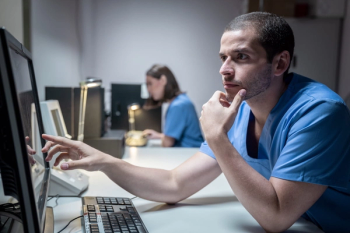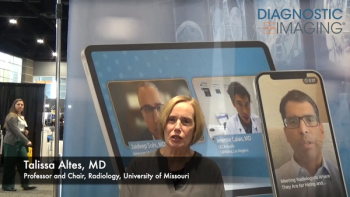
Siemens launches economical high-performance PET/CT
Other headlines:Philips offers CT and MR customers productivity boostMedicsight upgrades ColonCAD
Siemens launches economical high-performance PET/CT
Siemens cast its fledgling 16-slice PET/CT at the nexus of vision and value. The latest development, unveiled at ECR 2009 as a work-in-progress slated to enter the Biograph TruePoint PET/CT family, is being designed with high-end PET technology and value-oriented 16-slice CT. For the most part, CT provides the anatomical context in which to interpret PET. The CT component, therefore, need not provide much more capability than is found on a 16-slice CT, if customers have only routine radiological or -- more likely -- oncological applications in mind.
Michael Reitermann, CEO of Siemens molecular imaging, described the new hybrid as a balance between innovation and access. It promotes the company's vision to facilitate "universal adoption of PET/CT" by keeping the cost of the system as low as possible, Reitermann said, yet still delivers high-performance PET imaging. Whole-body exams can be routinely accomplished in 10 minutes with the advanced technologies built into the High-Definition PET component.
The Biograph portfolio of PET/CT imagers now offers options with six-, 16-, 40-, and 64-slice CT configurations. The premium performance line of hybrids, Siemens' Biograph mCT, features 40-, 64-, and 128-slice CT capabilities.
Philips offers CT and MR customers productivity boost
Philips Healthcare says it has come up with a way to make imaging departments more productive, at least ones that use its MR and CT scanners. Unveiled at ECR 2009, Philips Utilization Services considers the hurdles that get in the way of providers who use these scanners, then comes up with plans to overcome them.
Philips' staff do the work: looking at how the scanners are used at the customer site, identifying bottlenecks, and proposing ways to improve workflow. Among the considerations are length of time the Philips MR and CT scanners sit idle, including the time between scans and between patients. Reports from Philips are updated daily to reflect changes that occur onsite and new opportunities for improvement.
The information may be put to good use immediately by providers seeking to boost daily throughput through methods to streamline workflow. Onsite administrators, and potentially Philips, may get some long-term value as well, according to Michiel Manuel, Philips senior vice president and general manager for customer services, Global Sales and Service International, who notes that the data may be helpful "when deciding how and when to upgrade or transition to a new system."
Medicsight upgrades ColonCAD
The latest version of CT colonography software from Medicsight debuted this week at ECR 2009. ColonCAD API 4.0 uses a more powerful algorithm to uncover colorectal polyps in CT data. The CE-Marked product, which will be sold through the company's European distributors, offers increased specificity that cuts the number of false-positive CAD marks per case.
Internal tests involving patient cases demonstrated that the ColonCAD API 4.0 remains as sensitive as the previous version but displays 50% fewer false-positive marks. This works out to a mean of 6.5 false marks per patient case, according to the company. Sensitivity is 85% for polyps 2 mm to 50 mm, 90% for polyps 6 mm to 9 mm, and 92% for polyps 10 mm and larger.
Newsletter
Stay at the forefront of radiology with the Diagnostic Imaging newsletter, delivering the latest news, clinical insights, and imaging advancements for today’s radiologists.




























